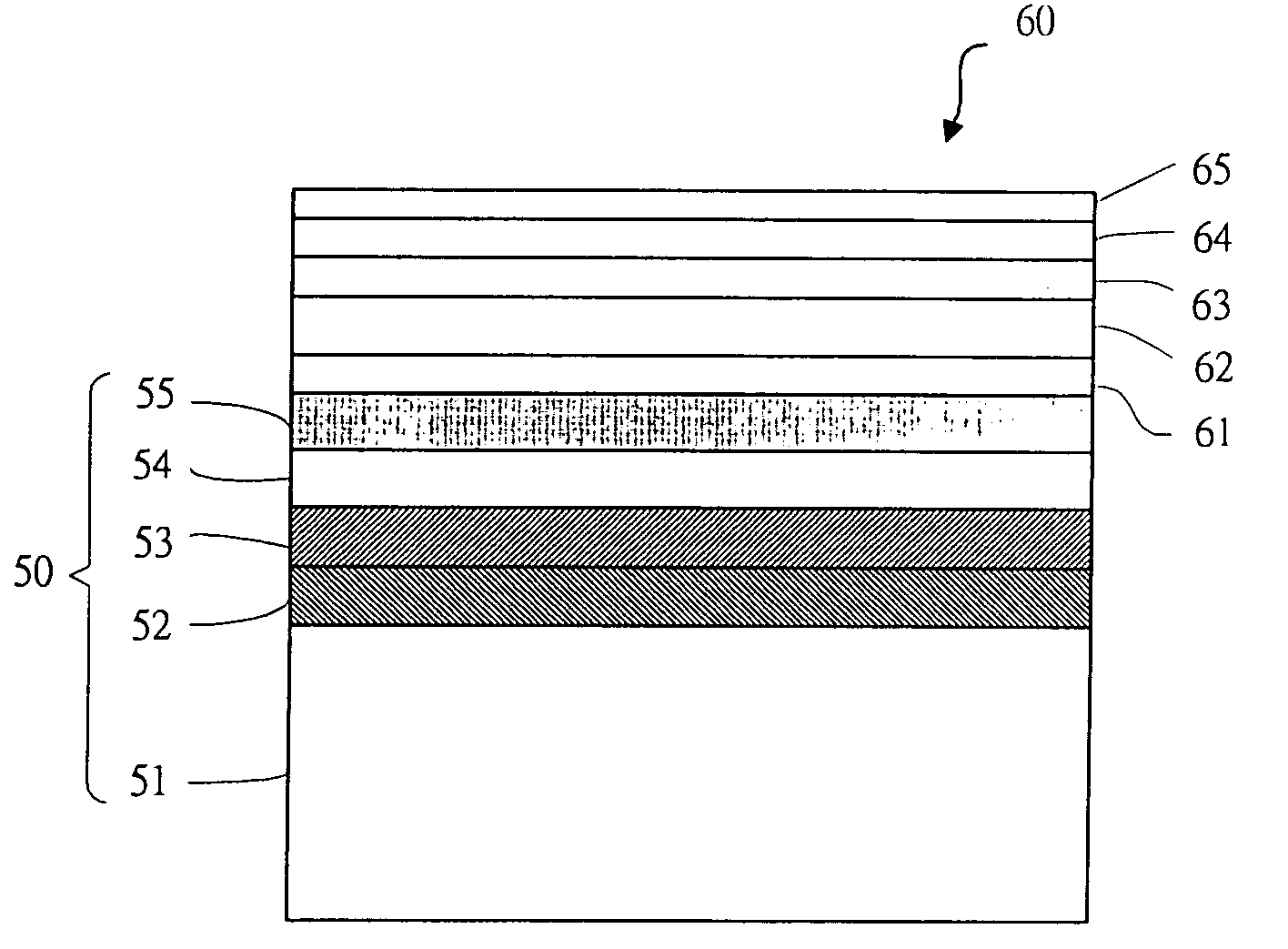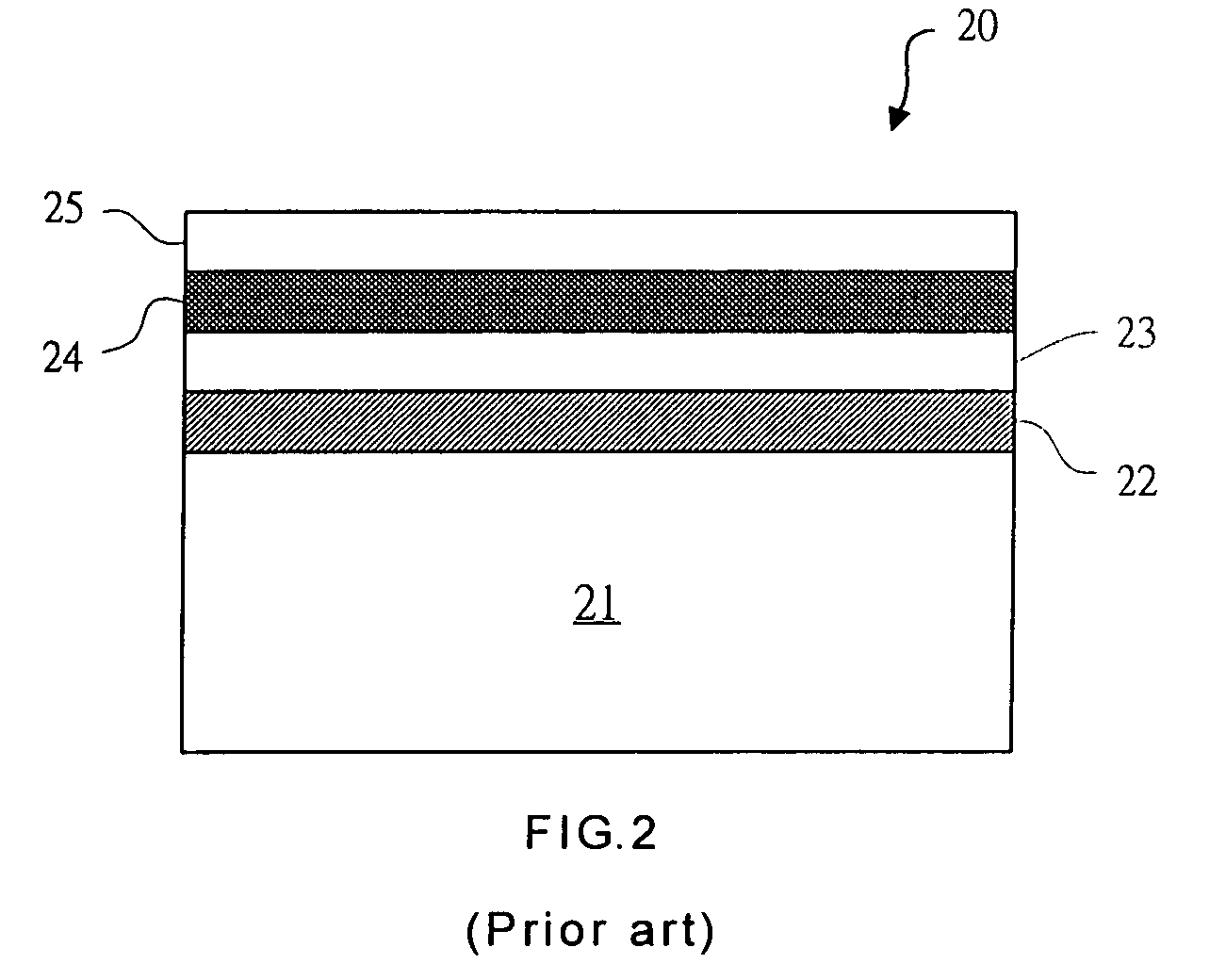Method for fabricating a compound semiconductor epitaxial wafer
- Summary
- Abstract
- Description
- Claims
- Application Information
AI Technical Summary
Benefits of technology
Problems solved by technology
Method used
Image
Examples
Embodiment Construction
[0026] The following descriptions of the preferred embodiments are provided to understand the features and the structures of the present invention.
[0027]FIG. 5, FIG. 6 and FIG. 7 are views showing the fabrication method for a compound semiconductor epitaxial wafer according to the present invention. As shown in FIG. 5, a metal-organic chemical vapor deposition (MOCVD) process is applied in the present invention. Firstly, a deposition is applied on a silicon substrate 51 at 580° C. (Celsius degree) by using a process gas of SiH4 to form a layer of an amorphous silicon film with a thickness of 10-25 Å (angstrom) to be a silicon first buffer layer 52. Then, a deposition is applied on the silicon first buffer 52 layer at 300° C. by using a process gas of Ga(CH3)3 and AsH3 to form a layer of GaAs with a thickness of 100 Å to be a compound semiconductor second buffer layer 53. Then, an epitaxy process is applied on the compound semiconductor second buffer layer 53 at 710° C. by using a p...
PUM
 Login to View More
Login to View More Abstract
Description
Claims
Application Information
 Login to View More
Login to View More - R&D
- Intellectual Property
- Life Sciences
- Materials
- Tech Scout
- Unparalleled Data Quality
- Higher Quality Content
- 60% Fewer Hallucinations
Browse by: Latest US Patents, China's latest patents, Technical Efficacy Thesaurus, Application Domain, Technology Topic, Popular Technical Reports.
© 2025 PatSnap. All rights reserved.Legal|Privacy policy|Modern Slavery Act Transparency Statement|Sitemap|About US| Contact US: help@patsnap.com



